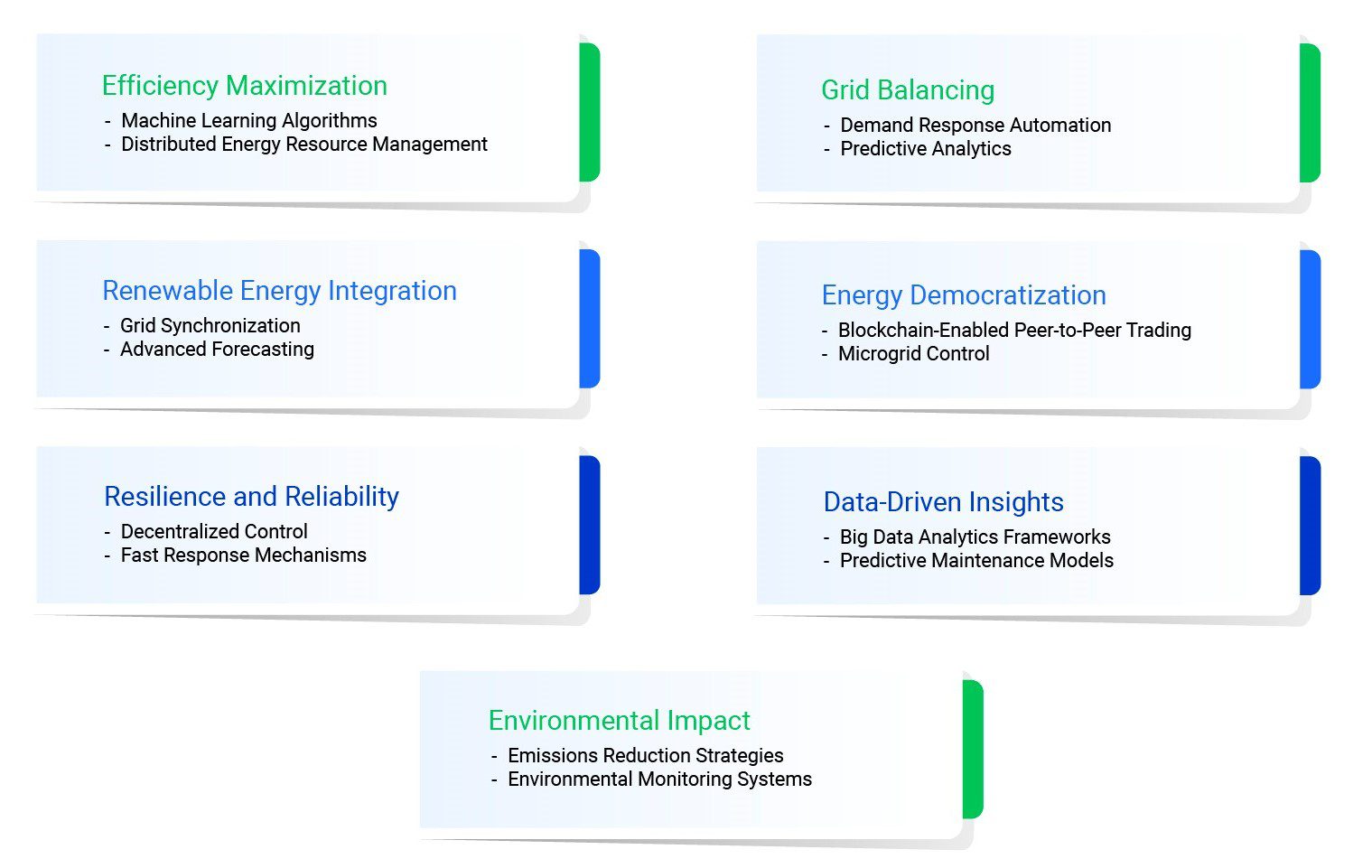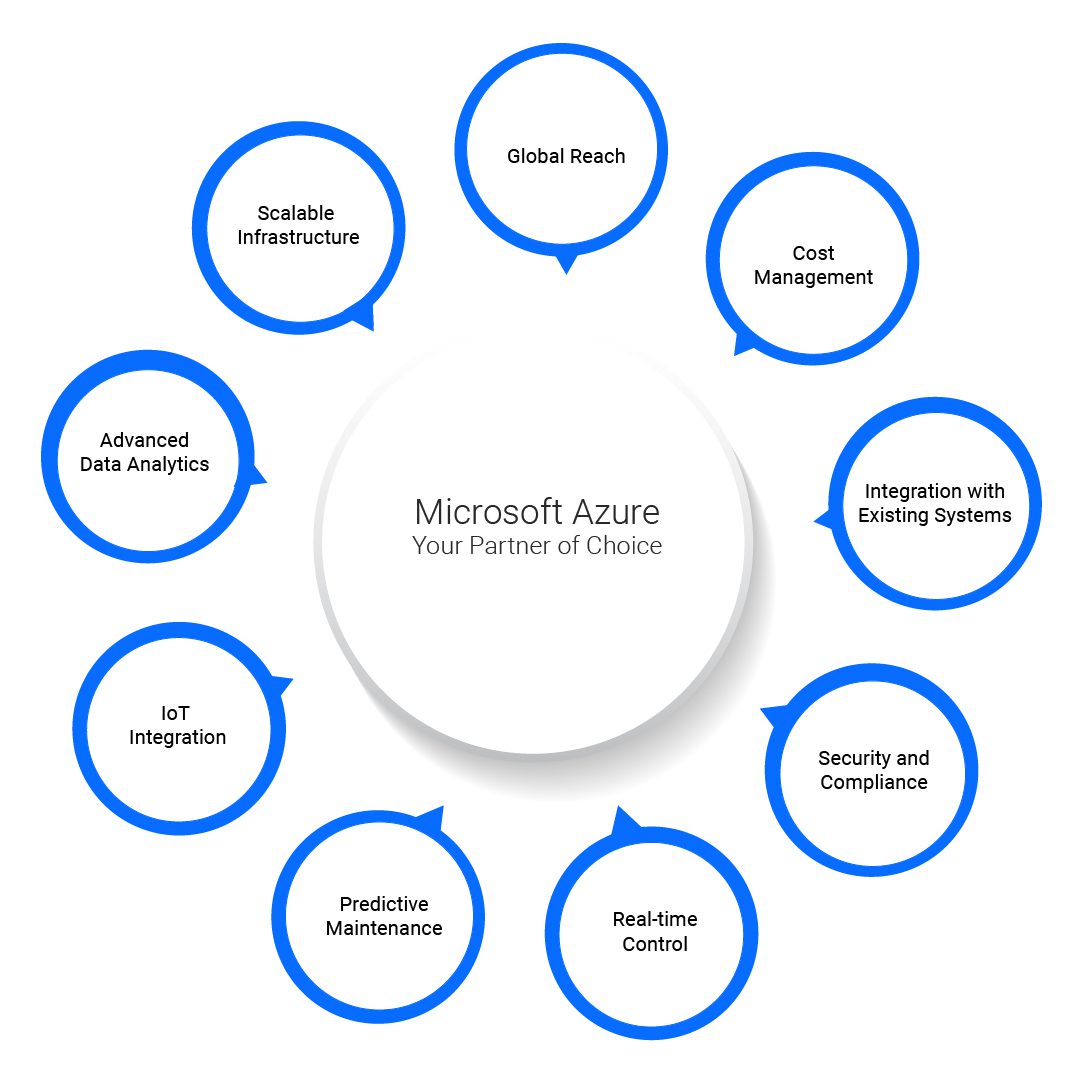Highlights:
- The evolution of energy grids, from centralized fossil fuel reliance to smart grids with distributed energy resources (DERs) and bidirectional energy flow, has transformed our ability to harness renewable energy sources and improve grid resilience.
- Cloud-Based Virtual Power Plants (VPPs) are the catalyst of change, bringing life to a revolution by uniting diverse energy resources into a single, eco-friendly, and intelligent power plant.
- As renewable energy takes center stage, enterprises like Enbala, Sunrun, and ENGIE North America are pioneering the path towards a sustainable and technologically advanced energy landscape through cloud-based VPPs
- Microsoft Azure is the linchpin that unleashes the potential of VPPs, driving innovation and sustainability in the energy sector.
In this Quick Byte:
Imagine an energy system that’s not only efficient but also eco-friendly, one that seamlessly integrates renewable energy sources while providing grid stability and reducing carbon emissions. This isn’t a vision of the distant future; it’s the promise of Cloud-Based Virtual Power Plants (VPPs), a game-changer in the energy industry. They represent a transformative solution that leverages cloud infrastructure and advanced technologies to harness the power of Distributed Energy Resources (DERs) and reshape the way we generate, manage, and consume energy. In this blog, we will embark on a journey to explore the world of VPPs, their significance in the evolving energy landscape, and how cloud technology, particularly Microsoft Azure, can propel energy companies toward a sustainable energy future.
The Evolution of Energy Grids
The energy grids that power our homes, businesses, and industries have come a long way since their inception. From the early days of centralized power generation to the current era of smart grids, the evolution of energy grids reflects our changing energy needs, environmental concerns, and technological advancements. Here’s a quick snapshot.
| Traditional Grids | Smart Grids | Impact | |
| Generation | Primarily centralized power generation from fossil fuels and nuclear. | Incorporates distributed energy resources (DERs) such as solar, wind, and decentralized power generation. | Modern grids integrate a significant share of DERs such as solar and wind power. As of 2023, the U.S. has over 120 GW of solar capacity and 140 GW of wind capacity. |
| Energy Flow | One-way flow from power plants to consumers. | Supports bidirectional energy flow, enabling energy injection into the grid from DERs and even consumer-to-grid power supply. | According to a report by the European Commission, the percentage of electricity consumers in the EU with the ability to feed electricity back into the grid increased from 23% in 2020 to 28% in 2022. |
| Flexibility | Limited flexibility in adapting to changing energy demand and incorporating renewable sources. | Highly adaptable, allowing the integration of renewables, demand response, and energy storage to meet varying demands. | According to the International Energy Agency (IEA), by 2022, the global share of renewables in electricity generation reached 33%, showcasing the successful integration of renewable sources into modern grids. |
| Grid Management | Manual and reactive grid management. Limited real-time monitoring and control. | Smart grid technologies enable proactive, real-time grid management, improving reliability and efficiency. | A 2022 report by the U.S. Department of Energy found that smart grid technologies reduced the frequency and duration of power outages by up to 50% in some areas. |
| Grid Resilience | Vulnerable to disruptions and outages, with slow recovery times. | Enhanced grid resilience with quicker response to disturbances, often through self-healing mechanisms. | A study by the National Institute of Standards and Technology found that a modern grid could reduce the cost of outages by up to 30%. |
| Environmental Impact | Heavily reliant on fossil fuels, contributing to pollution and greenhouse gas emissions. | Embraces renewable energy sources, reducing carbon footprint and mitigating climate change effects. | According to a study by the Intergovernmental Panel on Climate Change, a modern grid with a high share of renewable energy could reduce greenhouse gas emissions from the electricity sector by up to 80%. |
| Data and Communication | Minimal data collection and communication capabilities. | Utilizes advanced communication technologies and data analytics for real-time data collection, analysis, and decision-making. | According to a 2023 report by McKinsey & Company, modern grids with advanced data analytics capabilities can reduce operational costs by up to 15% and improve overall grid efficiency by up to 20% by 2030. |
| Efficiency | Less efficient in transmitting and distributing electricity over long distances. | Higher efficiency through localized energy production and reduced transmission losses. | The Electric Power Research Institute (EPRI) estimates that modernized grids with advanced control systems have reduced transmission and distribution losses by around 5% on average. |
| Adaptability to Renewables | Struggles to integrate intermittent renewable sources efficiently. | Effectively integrates renewables, managing fluctuations through advanced control systems. | According to a study by the International Renewable Energy Agency, a modern grid could integrate up to 80% renewable energy without sacrificing reliability. |
| Grid Security | Traditional grids are vulnerable to cyberattacks due to limited cybersecurity measures. | Modern grids incorporate robust cybersecurity protocols to protect critical infrastructure and data. | According to a recent report by the World Economic Forum, 92% of utilities worldwide had implemented cybersecurity measures in their smart grids by 2022. This represents a significant increase from 83% in 2020. |
Modern energy grids, often referred to as smart grids, offer numerous advantages over traditional grids. They are smaller, self-sufficient grids can operate independently or in coordination with the main grid, enhancing resilience and enabling localized power generation and storage. This makes them more adaptable to the changing energy landscape, promoting sustainability, improving grid reliability, and empowering consumers to take an active role in energy management. These advancements are critical for addressing the challenges posed by climate change and enhancing our energy systems’ overall efficiency and resilience.
The Role of Virtual Power Plants (VPPs)
While the shift to modern grids is promising, it’s not without challenges, especially in the integration of DERs. Distributed Energy Resources (DERs) empower us to reduce our reliance on fossil fuels, mitigate climate change, and gain more control over our energy consumption. However, their integration into the grid is cumbersome. Let’s face it – they’re unpredictable – the sun doesn’t always shine, and the wind doesn’t always blow. Plus, they’re often scattered across the grid, making it tough for utilities to manage them efficiently.
To address these integration challenges effectively, a critical need arises for Virtual Power Plants (VPPs). VPPs leverage cloud infrastructure and advanced technologies to aggregate, coordinate, and optimize the output of DERs. They enable these distributed resources to operate collectively as a unified, responsive, and controllable power plant, effectively harnessing their combined potential to meet grid demands and ensure a sustainable energy future.
What are Cloud-based Virtual Power Plants (VPPs)?
Think of VPPs as the digital wizards of the energy world. These ingenious systems leverage cloud infrastructure and cutting-edge technology to unite a diverse array of energy resources – we’re talking solar panels, wind turbines, batteries, and more – into a single, flexible, and intelligent power plant. What makes a VPP “virtual” is that it operates as a unified, responsive, and controllable power plant without physical infrastructure like a traditional power plant. Instead, it leverages cloud infrastructure and advanced software to coordinate and optimize Distributed Energy Resources (DERs).
Benefits of Cloud Infrastructure in VPPs:

1. Efficiency Maximization:
- Machine Learning Algorithms: VPPs utilize sophisticated deep learning models, such as recurrent neural networks (RNNs) and convolutional neural networks (CNNs), to predict electricity demand patterns. These models are trained on vast datasets, including historical consumption data, weather data from high-resolution climate models, and grid telemetry data.
- Distributed Energy Resource Management: Within DERMS, advanced optimization algorithms like mixed-integer linear programming (MILP) are employed. These algorithms consider complex constraints, such as battery charging and discharging rates, to minimize energy losses and operational costs.
2. Renewable Energy Integration:
- Grid Synchronization: VPPs employ phase-locked loop (PLL) control systems to precisely synchronize the output of renewable sources with the grid’s phase and frequency. Advanced power electronic converters ensure seamless integration.
- Advanced Forecasting: High-performance numerical weather prediction models, coupled with machine learning techniques like recurrent neural networks (RNNs) and Long Short-Term Memory (LSTM) networks, enable VPPs to forecast renewable energy generation with exceptional accuracy.
3. Resilience and Reliability:
- Decentralized Control: VPPs implement distributed control architectures with redundant controllers based on technologies like multi-agent systems (MAS). This redundancy ensures grid stability even in the presence of component failures.
- Fast Response Mechanisms: Real-time data processing is achieved through high-speed data buses and edge computing. Grid disturbances trigger rapid, autonomous responses through predictive control algorithms, guaranteeing sub-second reaction times.
4. Grid Balancing:
- Demand Response Automation: VPPs rely on advanced demand response systems based on automated logic controllers (ALCs) and real-time communication protocols like OpenADR. These systems enable fine-grained control over loads.
- Predictive Analytics: Predictive analytics utilize Bayesian models and autoregressive integrated moving average (ARIMA) time series forecasting to predict peak demand periods accurately. Optimization algorithms based on mixed-integer quadratic programming (MIQP) govern energy storage and dispatch strategies.
5. Energy Democratization:
- Blockchain-Enabled Peer-to-Peer Trading: VPPs leverage smart contracts on blockchain platforms like Ethereum for secure, decentralized peer-to-peer energy trading. Distributed ledger technology ensures transparency and tamper-proof records.
- Microgrid Control: Advanced microgrid controllers integrate with microgrid energy management systems (MGEMS), utilizing real-time data from phasor measurement units (PMUs) and synchrophasor technology. These controllers employ model predictive control (MPC) and hierarchical control strategies.
6. Data-Driven Insights:
- Big Data Analytics Frameworks: VPPs rely on distributed big data frameworks like Apache Kafka for real-time data streaming and Apache Spark for parallel processing. Machine learning pipelines employ natural language processing (NLP) for unstructured data analysis.
- Predictive Maintenance Models: Machine learning algorithms, including recurrent neural networks (RNNs) and support vector machines (SVMs), are used for predictive maintenance. These models ingest data from IoT sensors and equipment logs to predict equipment failures with high accuracy.
7. Environmental Impact:
- Emissions Reduction Strategies: VPPs employ emission models, such as Gaussian plume dispersion models, to assess the environmental impact of energy generation. Optimization algorithms minimize emissions by prioritizing the use of renewable sources.
- Environmental Monitoring Systems: VPPs integrate with environmental sensor networks, utilizing technologies like wireless sensor nodes and LoRaWAN for data collection. Environmental data is processed using geographical information systems (GIS) for real-time monitoring and analysis.
This marks a significant shift, and it’s driven by the synergy between Virtual Power Plants (VPPs) and cloud infrastructure. These technologies are reducing our reliance on fossil fuels while simultaneously making our energy systems smarter, more adaptable, and eco-friendly.
As renewable energy sources continue to take center stage in our energy mix, cloud-based VPPs are emerging as trailblazers, leading us toward a robust, sustainable, and technologically advanced energy landscape. Many players in the energy industry have already harnessed this technology and achieved remarkable results. Here are five enterprises that exemplify the incredible potential of Cloud-Based Virtual Power Plants, paving the way to a cleaner and more efficient world.
- Enbala (Generac): Enbala, now part of Generac, is a leader in distributed energy resource management. They have successfully implemented cloud-based VPPs to optimize DERs for grid balancing and demand response. Enbala’s platform enables real-time aggregation and control of distributed assets, helping grid operators maintain stability and efficiency while integrating renewable resources.
- Sunrun: Sunrun, a leading residential solar and energy storage company, has embraced cloud-based VPPs to optimize the performance of its residential solar and energy storage systems. By using VPP technology, Sunrun can aggregate and manage a vast network of residential assets, ensuring efficient energy production and grid stability.
- ENGIE North America: ENGIE, a global energy company, has implemented cloud-based VPPs to optimize its renewable energy portfolio. Their VPP platform enables the efficient management and coordination of wind, solar, and energy storage assets. ENGIE’s VPP technology helps maximize renewable energy generation and grid integration while ensuring a reliable and sustainable power supply.
- EDF Renewables: EDF Renewables, a subsidiary of EDF Group, utilizes cloud-based VPPs to enhance the performance of their renewable energy projects. Their VPP solutions aggregate and manage a diverse range of renewable assets, including wind and solar farms. EDF Renewables’ VPP technology optimizes energy production, reduces operational costs, and supports grid stability.
- NextEra Energy Resources: NextEra Energy Resources, one of the largest renewable energy companies in North America, has integrated cloud-based VPPs into its renewable energy portfolio. Their VPP technology optimizes the performance of wind and solar assets, helping to manage energy output fluctuations and grid integration challenges. NextEra’s cloud-based VPPs play a critical role in ensuring the reliability and sustainability of their renewable energy projects, contributing to a cleaner energy future.
These real-life examples demonstrate the versatility and effectiveness of cloud-based VPPs across various energy industry sectors. They illustrate how VPPs help optimize distributed energy resources, enhance grid stability, and contribute to a more sustainable and resilient energy ecosystem. As the adoption of renewable energy and DERs continues to grow, cloud-based VPPs are becoming indispensable tools for energy companies to navigate the evolving energy landscape successfully.
Microsoft Azure: Your Partner of Choice
Microsoft Azure’s role in Cloud-Based Virtual Power Plants (VPPs) is nothing short of transformative. It extends far beyond just providing cloud infrastructure; it plays a holistic and indispensable role in shaping the future of energy management. Here’s a comprehensive look at how Azure contributes to every facet of VPPs:

- Scalable Infrastructure: Azure offers scalable cloud infrastructure, allowing energy companies to expand their VPPs seamlessly as their Distributed Energy Resources (DERs) portfolio grows. Whether it’s adding more solar panels, wind turbines, or energy storage units, Azure can accommodate the increased computational and storage requirements, ensuring that VPPs can scale effectively to meet evolving energy demands.
- Advanced Data Analytics: Azure provides a wide range of data analytics and machine learning tools. Energy companies can harness Azure’s capabilities to process vast amounts of data generated by DERs in real time. This data analysis allows for predictive modeling, optimizing resource dispatch, and identifying opportunities for energy efficiency improvements.
- IoT Integration: Microsoft Azure IoT services enable energy companies to efficiently connect and manage IoT devices within their VPPs. This is particularly valuable for monitoring the performance of DERs, collecting data from sensors, and ensuring that assets are operating optimally.
- Predictive Maintenance: Azure’s machine learning capabilities can be used to implement predictive maintenance strategies for DERs within the VPP. By analyzing historical data and performance patterns, Azure can help identify potential equipment failures before they occur, reducing downtime and maintenance costs.
- Real-time Control: Azure’s real-time data processing and communication capabilities enable energy companies to exercise precise control over their VPPs. Grid operators can make informed decisions and rapidly respond to fluctuations in renewable energy generation, ensuring grid stability and reliability.
- Security and Compliance: Microsoft Azure prioritizes data security and compliance with industry standards and regulations. This is especially important in the energy sector, where sensitive data and critical infrastructure are involved. Azure’s robust security features and compliance certifications give energy companies confidence in their VPP operations’ safety.
- Integration with Existing Systems: Azure’s flexibility allows for seamless integration with existing IT infrastructure and systems. Energy companies can leverage Azure to connect their VPPs with other enterprise applications, creating a cohesive ecosystem for energy management.
- Cost Management: Azure offers cost management tools to help energy companies optimize cloud spending. This ensures that VPP operations remain cost-effective and align with budgetary constraints.
- Global Reach: Azure has a global presence with data centers in multiple regions. This global reach allows energy companies to deploy VPPs across diverse geographical locations while ensuring low-latency data processing and compliance with local data sovereignty requirements.
In essence, Azure is the backbone of Cloud-Based Virtual Power Plants, providing the technological prowess to harness the potential of DERs efficiently and sustainably. Its holistic role empowers energy companies to navigate the complex energy landscape, delivering cleaner, more reliable, and more cost-effective energy solutions. Azure’s contributions underscore its significance as a catalyst for innovation and transformation in the energy sector.
The Data Dynamics Advantage
Data Dynamics’ strategic partnership with Microsoft Azure presents a compelling opportunity for energy companies embarking on the journey of implementing cloud-based Virtual Power Plants (VPPs). By combining Data Dynamics’ expertise in data management and analytics with the robust capabilities of Microsoft Azure, energy companies gain a powerful toolkit for orchestrating distributed energy resources effectively. This partnership facilitates seamless data integration, enabling energy companies to collect, process, and derive actionable insights from the vast volumes of data generated by DERs. Azure’s scalable infrastructure ensures that VPPs can grow in tandem with the expanding portfolio of renewable energy assets, while Data Dynamics’ data management solutions ensure the efficient organization and utilization of this data. As energy companies navigate the complex landscape of DERs and the transition towards cleaner energy solutions, the Data Dynamics-Microsoft Azure partnership emerges as a catalyst for innovation and success, ultimately contributing to a more sustainable and resilient energy future.
Click here to learn more and discover the path to intelligent cloud migration. Reach out to us at solutions@datdyn.com or give us a call at (713)-491-4298, and we’ll be there to guide you through every step. The future is at your fingertips!






